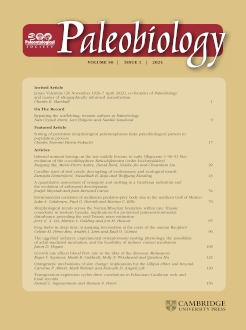Oviraptorosaurs, small, feathered dinosaurs from the Cretaceous, have left an extensive fossil record of egg clutches, including numerous nests preserving adults on top of their eggs. Despite the volume and quality of these finds, the bizarre nest arrangement makes them difficult to interpret. Oviraptorosaur-style nests consist of up to three layers of eggs, organized in concentric rings within the interior walls of a volcano-shaped mound. Such nests are unknown among modern animals, and so this study used actualistic experimentation to investigate the thermodynamics of the clutch. Experiments used 36 infertile emu eggs, which are close in mass to those of medium-sized oviraptorosaurs, arranged in a sand nest as interpreted from the fossil record. A surrogate dinosaur was constructed (warmed by an interior water bath) to represent an adult attending its nest. Energy from the surrogate was monitored as it flowed throughout the nest. Resulting clutch temperatures are significantly above ambient conditions and fall in a range between modern bird and crocodile incubation temperatures. These experiments seem to support the notion that an attending adult oviraptorosaur would have the capacity to raise clutch temperatures above ambient using its body temperature, perhaps representative of crucial innovations on the path from crocodilian-type nesting to modern avian reproductive practices.
Numerous, high-quality reproduction-related oviraptorosaur fossils have been described. However, oviraptorosaur-style nests are unknown among extant animals, and their curious construction makes nesting behavior difficult to interpret. Experiments were undertaken to better understand oviraptorosaur nesting strategies. A surrogate was constructed and placed atop mock-oviraptorosaur nests built from sand and 36 infertile emu eggs (as Macroolithus approximations) arranged according to the most current nest reconstructions. Thermometers, placed within each egg and throughout the experimental area, recorded energy flow from the surrogate dinosaur into the nesting microenvironment. One experiment examined a basic open nest warmed from above; the second, a fully buried clutch warmed from above; and the third, a nest open like the first but with heating elements (representing hindlimbs) extending down into the nest. It was found that egg temperatures in each scenario surpassed ambient temperatures without requiring excessive energy input. Final clutch temperatures were below most avian values, closer to crocodilian incubation, but are likely conservative, considering experimental parameters. These results may support the idea that an oviraptorosaur could use adult-generated energy to warm a clutch above ambient conditions. Additionally, egg tiers would be warmer and more uniform in temperature if heated by elements within the nest, such as hindlimbs, instead of solely from above. Results from the second experiment indicate that an endothermic adult could possibly warm a clutch fully buried beneath itself despite a barrier. Although not likely a behavior exhibited by oviraptorosaurs, such results suggest an important evolutionary step bridging guarded subterranean eggs and contact-incubated subaerial eggs.






